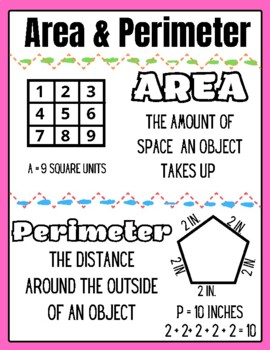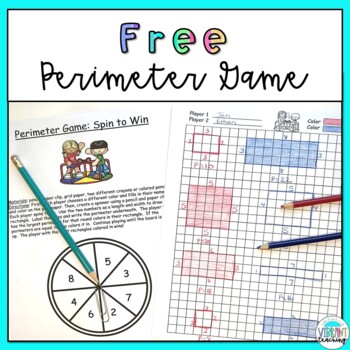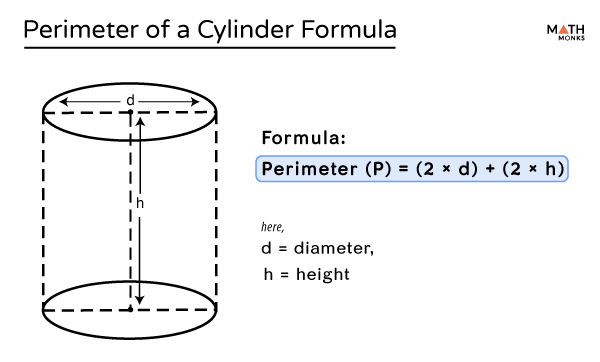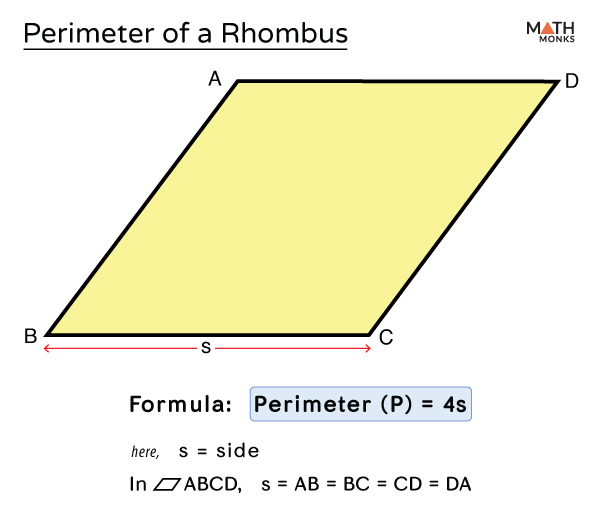Topic how do we find the perimeter of a circle: Discover the simple and accurate methods to find the perimeter of a circle, also known as the circumference. Whether you're using the radius or the diameter, our guide provides clear formulas and step-by-step instructions to help you master this essential geometric concept effortlessly.
Table of Content
- Understanding the Perimeter of a Circle
- Introduction to the Perimeter of a Circle
- Understanding Circle Terminology
- Key Formulas for Finding Circumference
- Steps to Calculate the Circumference
- Using the Radius to Find the Circumference
- Using the Diameter to Find the Circumference
- Example Calculations
- Visualization and Diagrams
- Common Mistakes to Avoid
- Practical Applications of Circumference
- Advanced Topics and Further Reading
- Frequently Asked Questions
- Conclusion
- YOUTUBE:
Understanding the Perimeter of a Circle
The perimeter of a circle is more commonly referred to as the circumference. It is the total distance around the circle. To find the perimeter (circumference) of a circle, you need to know the circle's radius or diameter.
Key Formulas
There are two primary formulas used to calculate the circumference of a circle:
- If you know the radius (r) of the circle: \[ C = 2\pi r \]
- If you know the diameter (d) of the circle: \[ C = \pi d \]
Steps to Find the Circumference
- Determine the radius or diameter: Measure the radius or diameter of the circle. The radius is the distance from the center of the circle to any point on its edge. The diameter is twice the radius, stretching across the circle through its center.
- Choose the appropriate formula: Use \( C = 2\pi r \) if you have the radius, or \( C = \pi d \) if you have the diameter.
- Plug in the values: Substitute the radius or diameter into the chosen formula.
- Calculate: Perform the multiplication to find the circumference. Use the approximation \(\pi \approx 3.14159\) if a more precise value is not required.
Example Calculation
Let's go through an example. Suppose you have a circle with a radius of 5 cm. To find the circumference:
- Use the formula \( C = 2\pi r \).
- Substitute the radius value: \( C = 2\pi \times 5 \).
- Calculate: \( C = 10\pi \approx 10 \times 3.14159 = 31.4159 \) cm.
Therefore, the circumference of the circle is approximately 31.42 cm.
Visualization with a Table
| Measurement | Value |
|---|---|
| Radius (r) | 5 cm |
| Formula | \( C = 2\pi r \) |
| Calculation | \( C = 2 \times 3.14159 \times 5 \) |
| Circumference (C) | 31.42 cm |

READ MORE:
Introduction to the Perimeter of a Circle
The perimeter of a circle, more commonly known as the circumference, is the distance around the edge of the circle. Understanding how to calculate the circumference is fundamental in geometry and various real-world applications. This section will guide you through the key concepts and methods for finding the perimeter of a circle step-by-step.
There are two primary methods for calculating the circumference, depending on whether you know the radius or the diameter of the circle:
- If you know the radius (r), use the formula: \[ C = 2\pi r \]
- If you know the diameter (d), use the formula: \[ C = \pi d \]
Here's a detailed explanation of these formulas:
- Radius Method:
- The radius is the distance from the center of the circle to any point on its edge.
- To find the circumference using the radius, multiply the radius by 2 and then by \(\pi\).
- For example, if the radius is 4 cm, the circumference is calculated as: \[ C = 2 \times \pi \times 4 = 8\pi \approx 25.13 \text{ cm} \]
- Diameter Method:
- The diameter is the distance across the circle through its center, which is twice the radius.
- To find the circumference using the diameter, multiply the diameter by \(\pi\).
- For example, if the diameter is 10 cm, the circumference is calculated as: \[ C = \pi \times 10 \approx 31.42 \text{ cm} \]
Understanding and using these formulas will allow you to accurately determine the circumference of any circle, providing a solid foundation for further exploration in geometry and its applications.
Understanding Circle Terminology
To effectively find the perimeter (circumference) of a circle, it is essential to understand the basic terminology associated with circles. Here are the key terms you need to know:
- Circle: A set of points in a plane that are equidistant from a given point called the center.
- Center: The point equidistant from all points on the circle.
- Radius (r): The distance from the center of the circle to any point on its edge. It is a crucial measurement for calculating the circumference and area of the circle.
- Diameter (d): The distance across the circle, passing through the center. It is twice the length of the radius: \[ d = 2r \]
- Circumference (C): The total distance around the circle. It is calculated using either the radius or the diameter:
- Using the radius: \[ C = 2\pi r \]
- Using the diameter: \[ C = \pi d \]
- Pi (π): A mathematical constant approximately equal to 3.14159. It represents the ratio of the circumference of a circle to its diameter.
- Chord: A line segment with both endpoints on the circle. A special type of chord that passes through the center of the circle is the diameter.
- Arc: A portion of the circumference of a circle.
- Sector: A region enclosed by two radii and an arc.
- Segment: A region enclosed by a chord and the arc it subtends.
Understanding these terms will help you better grasp the properties and measurements of circles, making it easier to apply the formulas and calculate the circumference accurately.
Key Formulas for Finding Circumference
The circumference of a circle can be determined using simple mathematical formulas involving the circle's radius or diameter. Here are the key formulas and a step-by-step approach to using them:
- Using the Radius (r):
\[
C = 2\pi r
\]
- Identify the radius of the circle. The radius is the distance from the center of the circle to any point on its edge.
- Multiply the radius by 2 to get the diameter. This step is embedded in the formula but understanding it helps clarify the relationship between radius and diameter.
- Multiply the result by \(\pi\) (approximately 3.14159).
- Example: If the radius is 7 cm, \[ C = 2 \times \pi \times 7 \approx 2 \times 3.14159 \times 7 = 43.98 \text{ cm} \]
- Using the Diameter (d):
\[
C = \pi d
\]
- Identify the diameter of the circle. The diameter is the distance across the circle through its center, and it is twice the radius.
- Multiply the diameter by \(\pi\).
- Example: If the diameter is 14 cm, \[ C = \pi \times 14 \approx 3.14159 \times 14 = 43.98 \text{ cm} \]
These formulas provide a straightforward way to calculate the circumference of any circle, given either its radius or diameter. By following the steps outlined, you can easily determine the perimeter and apply this knowledge in various mathematical and real-world contexts.
Steps to Calculate the Circumference
Calculating the circumference of a circle involves using one of two primary formulas, depending on whether you know the radius or the diameter of the circle. Here are the steps for each method:
-
Using the Radius:
- Identify the radius of the circle, which is the distance from the center of the circle to any point on its edge. Denote this radius as r.
- Use the formula for the circumference: \( C = 2 \pi r \)
- Substitute the value of the radius into the formula.
- Calculate the result by multiplying the radius by \( 2 \) and then by \( \pi \) (approximately 3.14159).
- Example: If the radius is 5 units, then the circumference \( C = 2 \pi \times 5 \approx 2 \times 3.14159 \times 5 \approx 31.42 \) units.
-
Using the Diameter:
- Identify the diameter of the circle, which is the distance across the circle passing through the center. Denote this diameter as d.
- Use the formula for the circumference: \( C = \pi d \)
- Substitute the value of the diameter into the formula.
- Calculate the result by multiplying the diameter by \( \pi \) (approximately 3.14159).
- Example: If the diameter is 10 units, then the circumference \( C = \pi \times 10 \approx 3.14159 \times 10 \approx 31.42 \) units.
In summary, the key steps involve identifying the correct measurement (radius or diameter), applying the appropriate formula, and performing the multiplication to find the circumference.

Using the Radius to Find the Circumference
To find the circumference of a circle using its radius, you can use the following formula:
\[
C = 2\pi r
\]
where \(C\) is the circumference and \(r\) is the radius.
- Identify the radius:
The radius of a circle is the distance from its center to any point on its edge. For example, if the radius \(r\) is 5 units, this value will be used in the formula.
- Plug the radius into the formula:
Once you have the radius, substitute it into the formula \(C = 2\pi r\). Using our example with a radius of 5 units:
\[
C = 2\pi \times 5
\] - Calculate the circumference:
Multiply the radius by 2 and then by \(\pi\) (approximately 3.14159). Continuing with our example:
\[
C = 2 \times 3.14159 \times 5 \approx 31.4159 \text{ units}
\]
Thus, the circumference of a circle with a radius of 5 units is approximately 31.42 units.
Here are a few additional points to keep in mind:
- \(\pi\) (pi) is a mathematical constant that represents the ratio of the circumference of a circle to its diameter. It is approximately equal to 3.14159, but in many calculations, you can use the approximation 3.14 for simplicity.
- The radius is always half of the diameter. If you know the diameter, you can find the radius by dividing the diameter by 2.
- This method is applicable to any circle, regardless of its size, as long as you know the radius.
Using the Diameter to Find the Circumference
The circumference of a circle can be easily calculated using its diameter. The diameter is the length of a straight line passing through the center of the circle and touching two points on its boundary. The formula to find the circumference when the diameter is known is:
\[
\text{Circumference} = \pi \times \text{Diameter}
\]
Here are the steps to calculate the circumference using the diameter:
- Measure the Diameter: Determine the length of the diameter of the circle. This can be done by measuring the distance from one point on the edge of the circle, through the center, to the opposite edge.
- Use the Formula: Substitute the measured diameter into the formula. If the diameter (\(D\)) is known, the formula simplifies to:
\[
\text{Circumference} = \pi \times D
\] - Calculate the Circumference: Multiply the diameter by π (Pi). The value of π is approximately 3.14159, but using the π button on a calculator will give a more precise result.
For example, if the diameter of a circle is 10 units, the circumference is calculated as follows:
\[
\text{Circumference} = \pi \times 10 \approx 3.14159 \times 10 \approx 31.4159 \text{ units}
\]
This method provides a straightforward way to find the circumference of any circle as long as the diameter is known.
Example Calculations
To understand how to find the circumference of a circle, let's look at some example calculations. We'll use both the radius and the diameter in different examples.
Example 1: Using the Radius
Given a circle with a radius (r) of 5 units, calculate the circumference.
The formula for the circumference using the radius is:
\[ C = 2\pi r \]
- Substitute the radius value into the formula:
\[ C = 2 \times \pi \times 5 \]
- Simplify the expression:
\[ C = 10\pi \]
- If \(\pi\) is approximated as 3.14, then:
\[ C \approx 10 \times 3.14 = 31.4 \text{ units} \]
Example 2: Using the Diameter
Given a circle with a diameter (d) of 10 units, calculate the circumference.
The formula for the circumference using the diameter is:
\[ C = \pi d \]
- Substitute the diameter value into the formula:
\[ C = \pi \times 10 \]
- Simplify the expression:
\[ C = 10\pi \]
- If \(\pi\) is approximated as 3.14, then:
\[ C \approx 10 \times 3.14 = 31.4 \text{ units} \]
Example 3: Using a Different Radius
Given a circle with a radius (r) of 7 units, calculate the circumference.
The formula for the circumference using the radius is:
\[ C = 2\pi r \]
- Substitute the radius value into the formula:
\[ C = 2 \times \pi \times 7 \]
- Simplify the expression:
\[ C = 14\pi \]
- If \(\pi\) is approximated as 3.14, then:
\[ C \approx 14 \times 3.14 = 43.96 \text{ units} \]
Example 4: Using a Different Diameter
Given a circle with a diameter (d) of 14 units, calculate the circumference.
The formula for the circumference using the diameter is:
\[ C = \pi d \]
- Substitute the diameter value into the formula:
\[ C = \pi \times 14 \]
- Simplify the expression:
\[ C = 14\pi \]
- If \(\pi\) is approximated as 3.14, then:
\[ C \approx 14 \times 3.14 = 43.96 \text{ units} \]
These examples illustrate how to use the formulas for circumference with both the radius and diameter. Practice with different values to become more comfortable with these calculations.
Visualization and Diagrams
Visualizing the perimeter of a circle, known as the circumference, can be greatly enhanced through diagrams and illustrations. Below, we provide a detailed step-by-step guide to understanding and visualizing the circumference of a circle.
Basic Circle Diagram
To start, let's look at a basic diagram of a circle:
- Radius (r): The distance from the center of the circle to any point on its edge.
- Diameter (d): The distance across the circle, passing through the center. It is twice the radius (d = 2r).
- Circumference (C): The distance around the circle.
Here's a simple diagram:

|
Circumference Formula Visualization
The formula for the circumference of a circle is given by:
\[ C = 2 \pi r \] or \[ C = \pi d \]
These formulas help us calculate the circumference using either the radius or the diameter. Visualizing these formulas can make them easier to understand:

|
Step-by-Step Visualization
Follow these steps to visualize finding the circumference:
- Identify the radius (r) or diameter (d) of the circle.
- Use the formula \( C = 2 \pi r \) if you have the radius.
- Use the formula \( C = \pi d \) if you have the diameter.
- Calculate the value of \( \pi \) (approximately 3.14159).
- Multiply the value of \( \pi \) by the diameter or twice the radius to find the circumference.
Example Calculation Diagram
Consider a circle with a radius of 5 units:
- Using the formula \( C = 2 \pi r \):
- \[ C = 2 \times 3.14159 \times 5 = 31.4159 \] units
This calculation can be visualized in the following diagram:

|
Interactive Diagrams
Interactive diagrams can further enhance understanding. For instance, an interactive circle diagram allows you to change the radius or diameter and see how the circumference changes dynamically:
- Adjust the radius or diameter using a slider.
- Observe how the circumference value updates in real-time.
Such interactive tools are often available in educational software or online platforms.
Common Visual Mistakes
When visualizing the circumference, avoid these common mistakes:
- Confusing the radius with the diameter.
- Using an incorrect value for \( \pi \).
- Not squaring the radius when visualizing area instead of circumference.
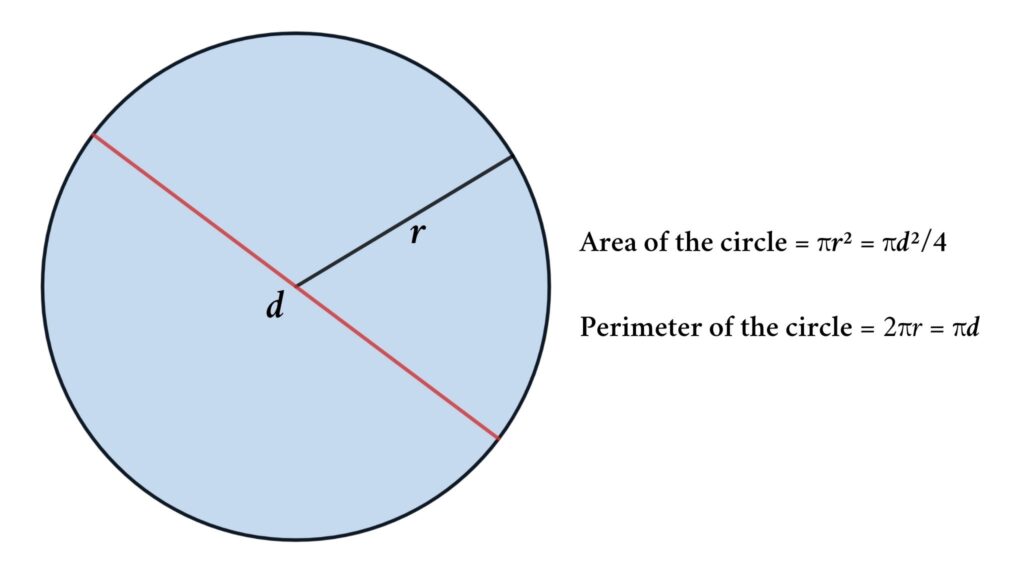
Common Mistakes to Avoid
When calculating the perimeter of a circle, which is also known as the circumference, there are several common mistakes that can lead to inaccuracies. Here are the key mistakes to avoid:
- Using Perimeter and Circumference Interchangeably:
While "perimeter" refers to the distance around any two-dimensional shape, "circumference" specifically refers to the distance around a circle. It's important to use these terms correctly to avoid confusion.
- Confusing Units of Measurement:
Ensure you use the correct units of measurement. Circumference is usually measured in linear units such as centimeters, meters, or inches. Avoid mixing these units to maintain accuracy.
- Forgetting to Include Pi (π):
Pi (π) is a crucial part of the formula for calculating the circumference of a circle. The formulas are:
- Using radius (r): \( C = 2\pi r \)
- Using diameter (d): \( C = \pi d \)
Omitting π or using an incorrect value can result in significant errors.
- Incorrect Formula Usage:
Make sure you apply the correct formula based on whether you are given the radius or diameter of the circle. Remember:
- If you have the radius, use \( C = 2\pi r \)
- If you have the diameter, use \( C = \pi d \)
- Calculation Errors:
Double-check your calculations for arithmetic errors. Simple mistakes in multiplication or incorrect use of a calculator can lead to wrong results.
By being aware of these common mistakes and taking steps to avoid them, you can ensure your calculations of the circumference are accurate and reliable.
Practical Applications of Circumference
The circumference of a circle is a fundamental concept in geometry with numerous practical applications in various fields. Understanding how to find the circumference is essential for solving real-world problems. Here are some key applications:
-
Engineering and Construction:
In engineering and construction, the circumference is used to determine the perimeter of circular structures such as pipes, columns, and arches. For instance, when designing a circular swimming pool, knowing the circumference helps in calculating the required materials for the pool's edge and the surrounding deck.
-
Manufacturing:
Manufacturers often need to know the circumference to produce circular objects like wheels, gears, and belts. For example, the circumference is critical in determining the length of material needed to create a conveyor belt that wraps around rollers.
-
Agriculture:
In agriculture, farmers use the concept of circumference to measure circular plots of land, irrigation circles, and storage bins. Calculating the circumference helps in planning the layout of crops and efficient use of space.
-
Navigation and Astronomy:
In navigation, the circumference of the Earth is used to calculate distances and plot routes for air and sea travel. Astronomers use the concept to measure the orbits of planets and the dimensions of celestial bodies.
-
Sports and Recreation:
In sports, the circumference is essential for designing tracks, fields, and equipment. For instance, the circumference of a running track determines the distance athletes need to cover, and the circumference of balls (e.g., basketballs, soccer balls) affects gameplay.
Here are some step-by-step examples to illustrate the practical applications of circumference:
-
Example 1: Calculating the Perimeter of a Circular Garden Bed
Suppose you have a circular garden bed with a radius of 3 meters. To find the circumference, you can use the formula:
\[ C = 2\pi r \]
Substitute the radius (r = 3 meters) into the formula:
\[ C = 2 \times \pi \times 3 \approx 18.85 \text{ meters} \]
The circumference of the garden bed is approximately 18.85 meters.
-
Example 2: Determining the Length of a Circular Track
If a circular running track has a diameter of 100 meters, you can find the circumference using the diameter-based formula:
\[ C = \pi d \]
Substitute the diameter (d = 100 meters) into the formula:
\[ C = \pi \times 100 \approx 314.16 \text{ meters} \]
The circumference of the running track is approximately 314.16 meters.
Understanding the circumference of a circle enables efficient planning and execution in various practical scenarios, highlighting its importance in everyday life and professional applications.
Advanced Topics and Further Reading
In this section, we will explore advanced topics related to the circumference of a circle, providing a deeper understanding and further reading opportunities.
1. Arc Length and Sector Area
An arc is a portion of the circumference of a circle. The length of an arc can be calculated if the central angle and the radius are known. The formula for the length of an arc (L) is:
\[
L = \frac{\theta}{360^\circ} \times 2 \pi r
\]
where \(\theta\) is the central angle in degrees and \(r\) is the radius.
The area of a sector, which is the region enclosed by two radii and the arc, can be calculated using the formula:
\[
\text{Area of Sector} = \frac{\theta}{360^\circ} \times \pi r^2
\]
2. Applications in Calculus
In calculus, the concept of the circumference of a circle extends to finding the circumference of more complex curves using integration. For example, the circumference of an ellipse can be approximated using elliptic integrals. The general formula involves advanced mathematical concepts that require understanding of integration techniques.
3. Circumference in Non-Euclidean Geometry
In non-Euclidean geometry, the rules for circumference change. For instance, in spherical geometry, the circumference of a circle is smaller than in Euclidean geometry for the same radius. This is due to the curvature of the space, which affects the distance measurements.
4. Real-World Applications
- Engineering: Understanding the circumference is crucial in designing wheels, gears, and circular tracks.
- Astronomy: Calculating the circumference of planetary orbits helps in understanding their paths and distances.
- Geography: Mapping the circumference of the Earth and other celestial bodies aids in navigation and global positioning systems (GPS).
- Architecture: Designing circular structures, such as domes and columns, relies on accurate circumference calculations.
5. Further Reading and Resources
To explore more about the circumference and its applications, consider the following resources:
Frequently Asked Questions
-
What is the formula for the circumference of a circle?
The circumference \(C\) of a circle can be calculated using the formula \(C = 2\pi r\), where \(r\) is the radius of the circle. If the diameter \(d\) is known, the formula can also be written as \(C = \pi d\).
-
How do I find the radius if I know the circumference?
If the circumference \(C\) is known, the radius \(r\) can be found using the formula \(r = \frac{C}{2\pi}\).
-
What is the difference between circumference and perimeter?
Circumference is the term specifically used for the perimeter of a circle. In other shapes, perimeter refers to the distance around the shape.
-
How do I find the diameter if I know the circumference?
The diameter \(d\) can be found using the formula \(d = \frac{C}{\pi}\) if the circumference \(C\) is known.
-
Can I use the area to find the circumference?
Yes, if the area \(A\) of the circle is known, the circumference can be found using the formula \(C = \sqrt{4\pi A}\).
-
What value of \(\pi\) should I use?
In most calculations, \(\pi\) is approximated as 3.14 or \(\frac{22}{7}\). For more precise calculations, use \(\pi\) to more decimal places, such as 3.14159.
-
What are some practical applications of finding the circumference?
Finding the circumference is useful in various real-world applications, such as determining the length of material needed to wrap around a circular object, calculating distances traveled by wheels, and designing circular tracks.

Conclusion
In this article, we've explored the concept of the perimeter of a circle, also known as the circumference. Understanding how to find the circumference is crucial not only in academic settings but also in practical applications like engineering, construction, and various fields of science. Here's a summary of what we've covered:
- Introduction to the perimeter of a circle, defining it as the distance around the circle.
- Understanding circle terminology including radius, diameter, and π (pi).
- Key formulas for finding circumference: \(C = 2\pi r\) and \(C = \pi d\).
- Step-by-step methods to calculate the circumference using both the radius and the diameter.
- Example calculations to reinforce the application of these formulas.
- Visualization and diagrams to help conceptualize the formulas and their applications.
- Common mistakes to avoid, such as confusing the diameter with the radius or misapplying the value of π.
- Practical applications demonstrating the importance of understanding circumference in real-world contexts.
- Advanced topics and further reading for those interested in exploring more complex aspects of circles and their properties.
- Frequently asked questions to clarify common doubts and provide additional insights.
By mastering the calculation of a circle's circumference, you are equipped with a fundamental mathematical tool that is widely applicable. Whether you are a student, a professional, or simply someone interested in math, understanding the perimeter of a circle enhances your problem-solving skills and opens up new possibilities for exploration.
Continue practicing and applying these concepts to deepen your understanding and discover new ways to use mathematics in everyday life. Happy calculating!
Cách Tính Chu Vi Hình Tròn Từ Đường Kính
READ MORE:
Cách Tính Chu Vi Hình Tròn




